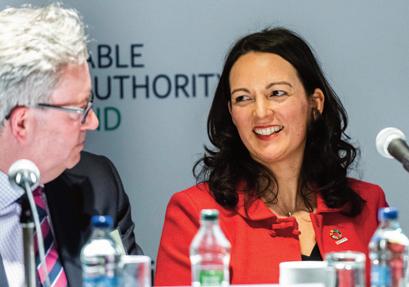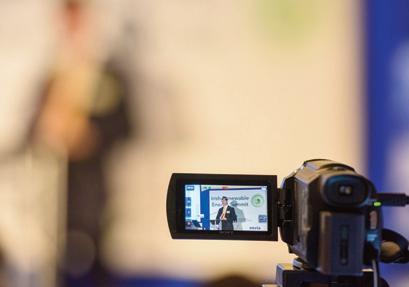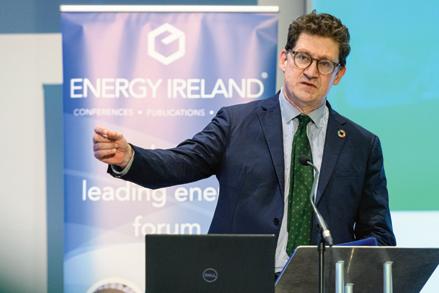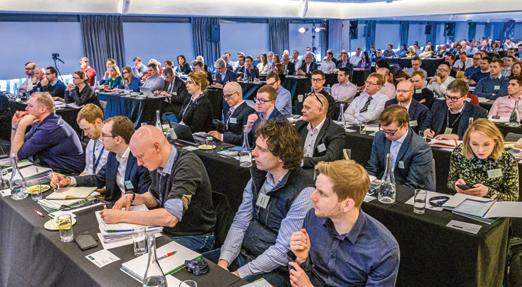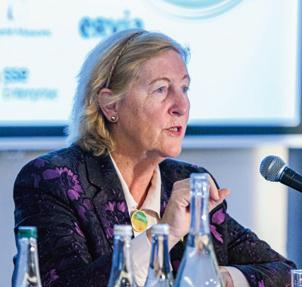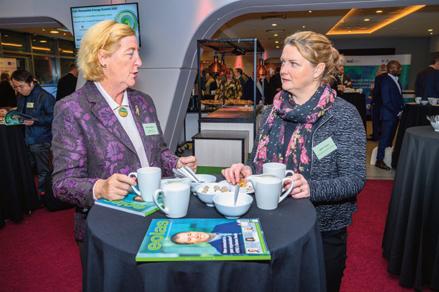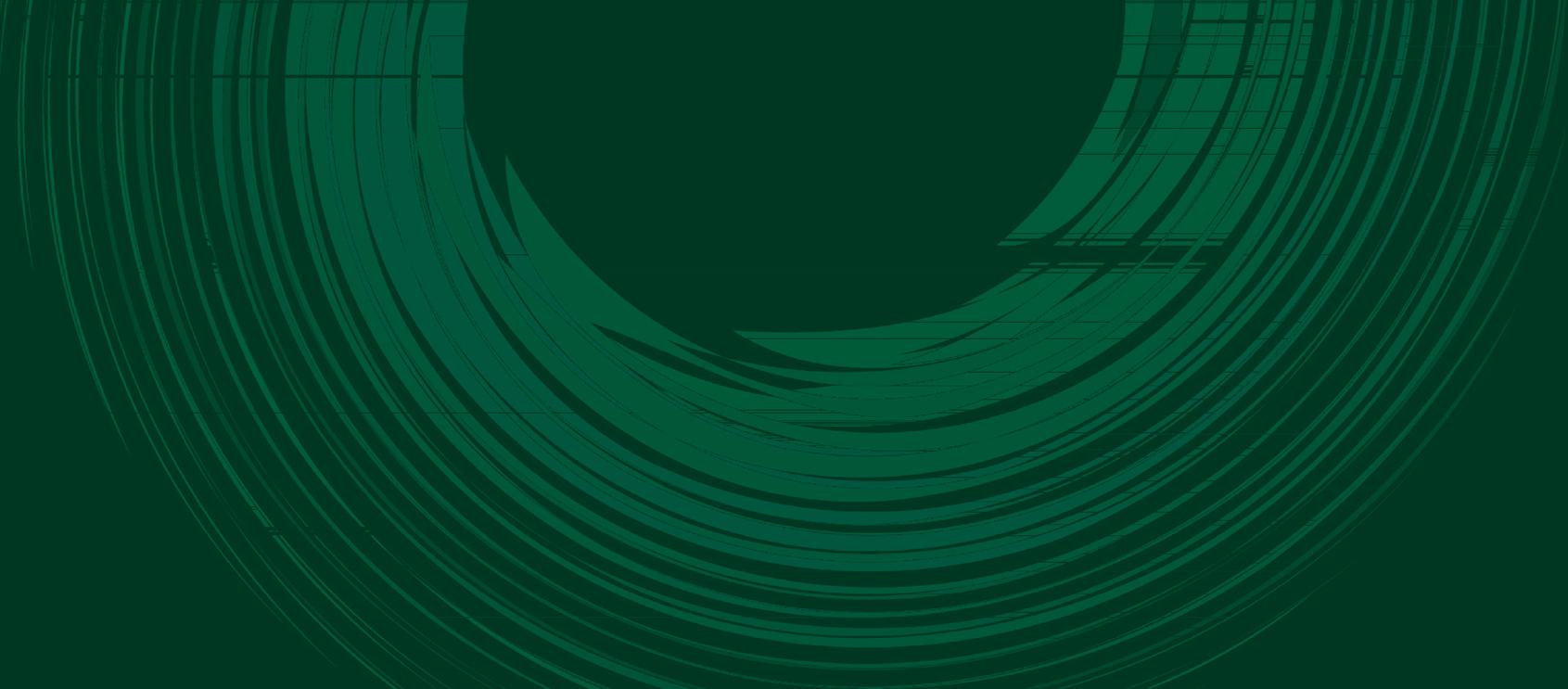Regional Focus: Galway City Council






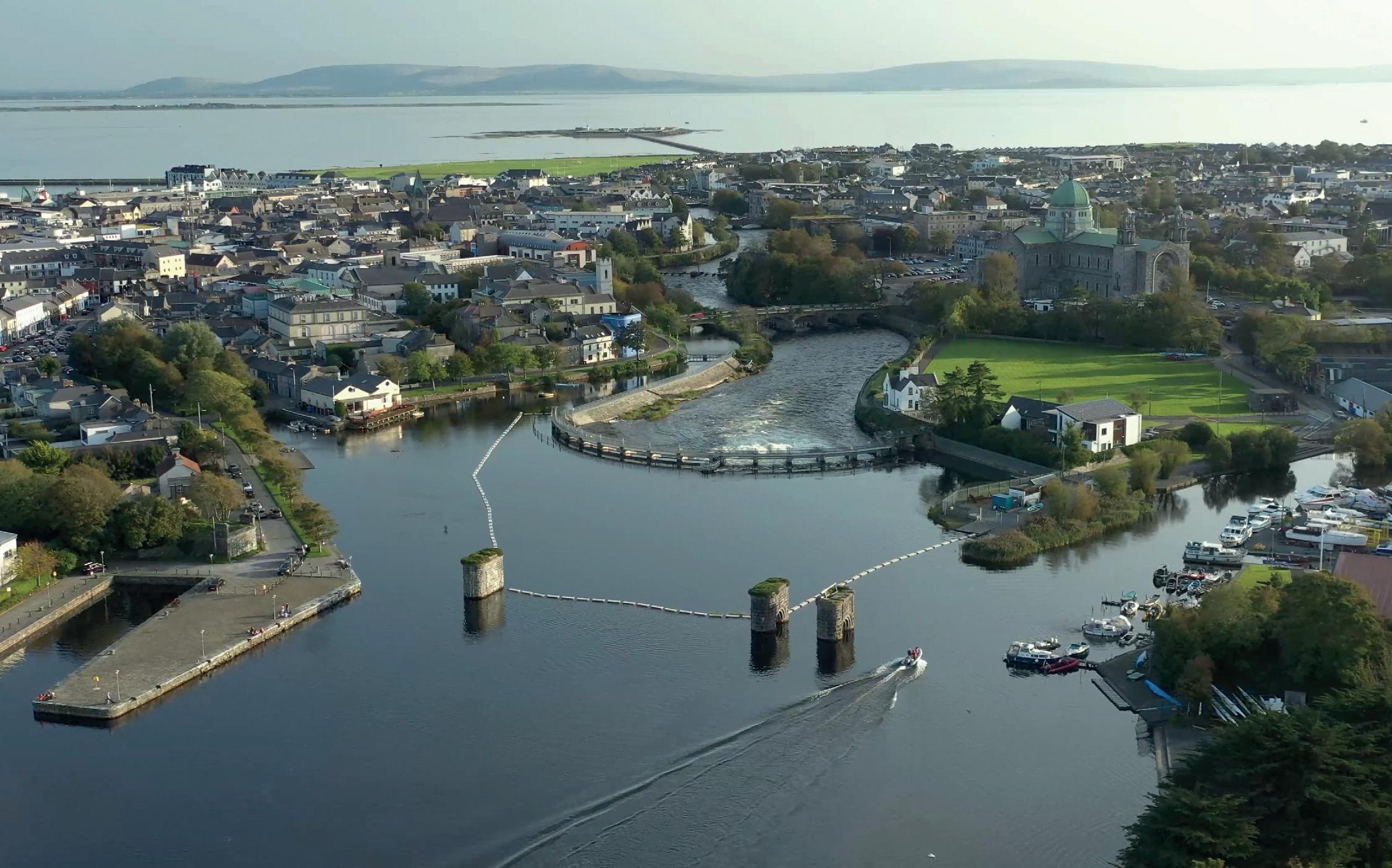
Galway is the only city and the principal growth centre in the Northern and Western Regional Assembly. The city is a key driver of economic development and competitiveness on the Atlantic Economic Corridor, making a significant contribution to the region’s GDP.
The city is also a major economic force in the Irish economy, leading in foreign and indigenous commercial investment, higher educational institutional achievement, workforce skills, and enjoying a rich cultural and heritage environment.
In recent decades, due to the high quality of life found here, the city has also become one of the most popular locations in Ireland in which to live, work, invest, or visit. This is a city of communities that are well connected, integrated, and inclusive.
Galway has been Ireland’s most rapidly developing urban area for half a century. Galway City will grow its population by 40,000 by 2040. This journey has begun. It will be achieved through a combination of organic population growth, retention of graduates, and attraction of new citizens.
It will require significant investment in infrastructure across the entire spectrum. To make this
growth sustainable and carbon neutral is a priority. It will need comparable employment growth during this period to make it viable. The skillset of the city’s labour force will also need to evolve over this period.
The city relishes this opportunity. It has successfully embraced such growth rates in the recent past while retaining the features that make this place in the world so attractive and unique. It is a centre of learning, a Capital of Culture, an innovation hub, and an affordable and safe community. This placemaking to date has been successfully facilitated by the various stakeholders in the city through collaborative relationships and this continued collaboration will be essential to ensure that our vision for growth is achieved.
The city is located at a pivotal point on the Atlantic Economic Corridor. This is a multilingual city with a diverse but integrated society that is open and welcoming. It has a successful innovation ecosystem
that is recognised as a sought-after location for international businesses and start-up enterprises. This is supported by a creative culture that permeates all business sectors.
Galway is located in one of the most scenic parts of the world, at the heart of the Wild Atlantic Way and contiguous to a UNESCO Geopark site. The city’s surrounding hinterland is diverse, engaging, entrancing, and healthy.
The next phases of Galway city’s growth must be more sustainable. The city will decarbonise its future growth. International trends and national policy are directing that the future growth of the city is biased towards the urban core. Galway city is already witnessing that direction of private and public investment towards the development of commercial and residential property at the city’s core to cater for the changing demands.
The city’s transport policy is also
facilitating a behavioural change from private vehicles to public transport and non-vehicular transport. Investment is being channelled to projects to accelerate this modal shift. Public transport corridors through the core of the city are being developed to link residential, learning, and employment hubs in the city in tandem with the development of city greenways and blueways.
Galway city will increase its population by at least 50 per cent by 2040. This will involve:
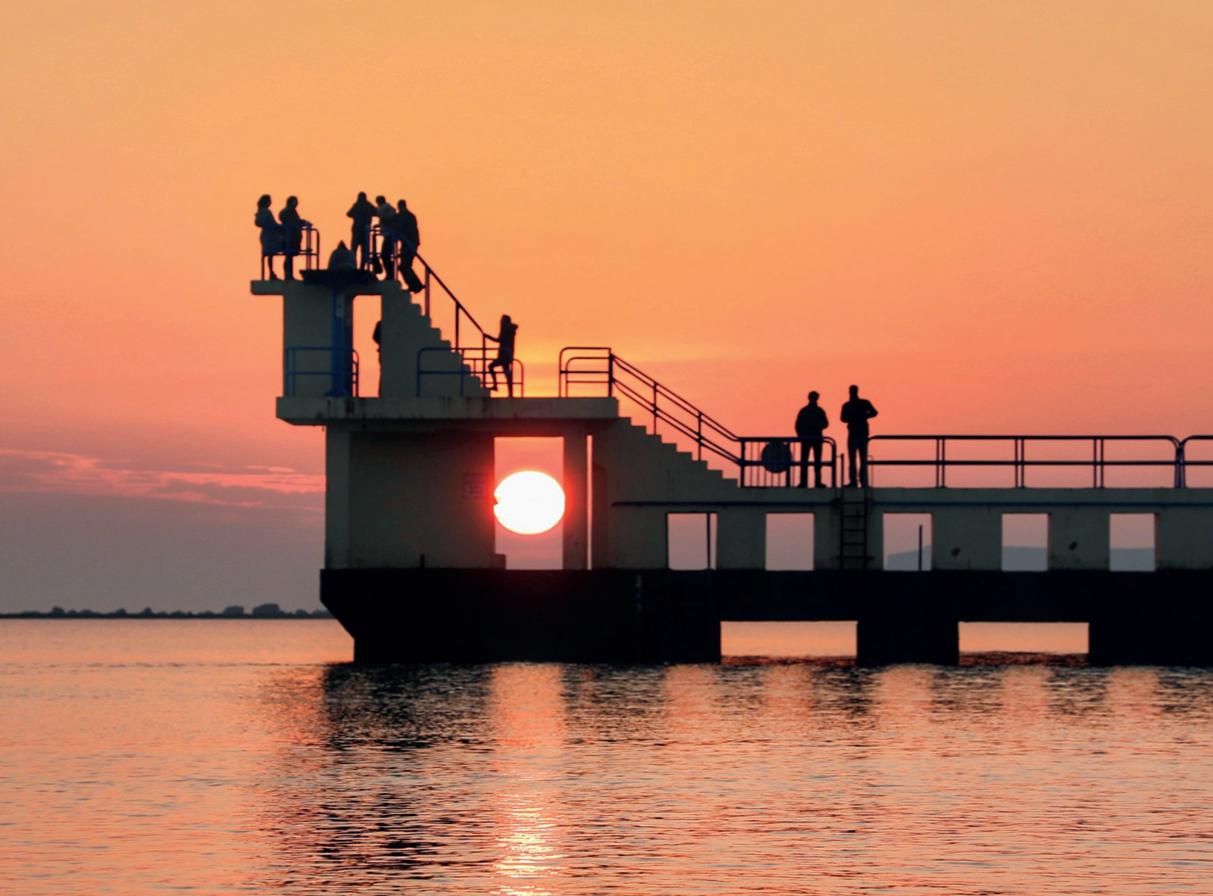
• creating 16,500 residential units;
Growth in a sustainable manner - key enabling infrastructure will be put in place which includes:
• increased rail capacity at Ceannt Station and double tracking of rail connectivity between the city core and national rail network;
• increased rail platforms servicing the east of the city;
• increased water and waste treatment capacity;
• public transport corridors through the core of the city;
• greenways and blueways through the core of the city linking to national greenway routes;
• full development of infrastructure in the Galway Transportation Strategy;
• the Galway City Outer Bypass;
• further development of University of Galway campus;

• further development of ATU campus in Galway city;
• investment in the public realm;
• investment in energy networks city wide fibre-based communication networks;
• recreational and green space;
• cultural infrastructure;
• educational infrastructure; and
• health infrastructure.
• creating an additional 18,500 jobs for citizens of the city;
• providing an additional 7,000 third level student places;
• creating the capacity to handle an additional 2.7 million visitors per annum;
• providing commercial office space of 150,000 sq metres; and
• Increasing commercial retail space.
W: www.galwaycity.ie
Completed, current and pre-approved city projects:
Cluain Mhuire Creative Hub; SCCUL Enterprise Hub; ATU Innovation Hub; Bonham Quay development; Crown Square development; Sandy Road Quarter; Galway Inner Dock Masterplan; Ceannt Quarter development; Dyke Road Masterplan; Development of Ardaun Corridor; Galway Port expansion; Galway Technology Centre; Portershed Innovation District - Phases I and II; Nun’s Island Riverside Campus; Galway Transportation Strategy; University of Galway Library; and GCC Housing Capital Programme.
REGIONAL FOCUS: GALWAY CITY COUNCILThe city has been relatively prosperous throughout the last decade and is the most diverse city in the State as well as being a hub of Irish culture as the city with the highest daily use of Gaeilge.
Transport can be regarded as the city’s point for improvement, although its connectivity has been improved since the construction of the M6 motorway connecting Galway city with Dublin. Galway is the most isolated city in the State from an airport, a legacy of the 2008 recession when Galway Airport, which once facilitated 300,000 users per year, was closed in 2011.
The city’s harbour has applied for permits to expand pending the approval of the Minister for Housing, Local Government and Heritage, although this process has been ongoing since 2014 and will not be completed until 2032 at the earliest.

Galway city population: 83,456 Galway most multi-cultural city in the State: 18.6 per cent ‘non-Irish’ 30 per cent families with lone parents – state average of 25 per cent 55 per cent of population has a third-level qualification 8.6 per cent of people with no formal education
Source: Galway City Council
Average house price in the Galway city: €354,569
Average house price in the State: €311,514
National average rent: €1,618 per month
Average rent Galway: €1,663 per month
Source: Daft.ie
Approximately 29,000 full-time students 17,318 University of Galway students 12,000 Atlantic Technological University students 45.5 per cent of population with third-level education
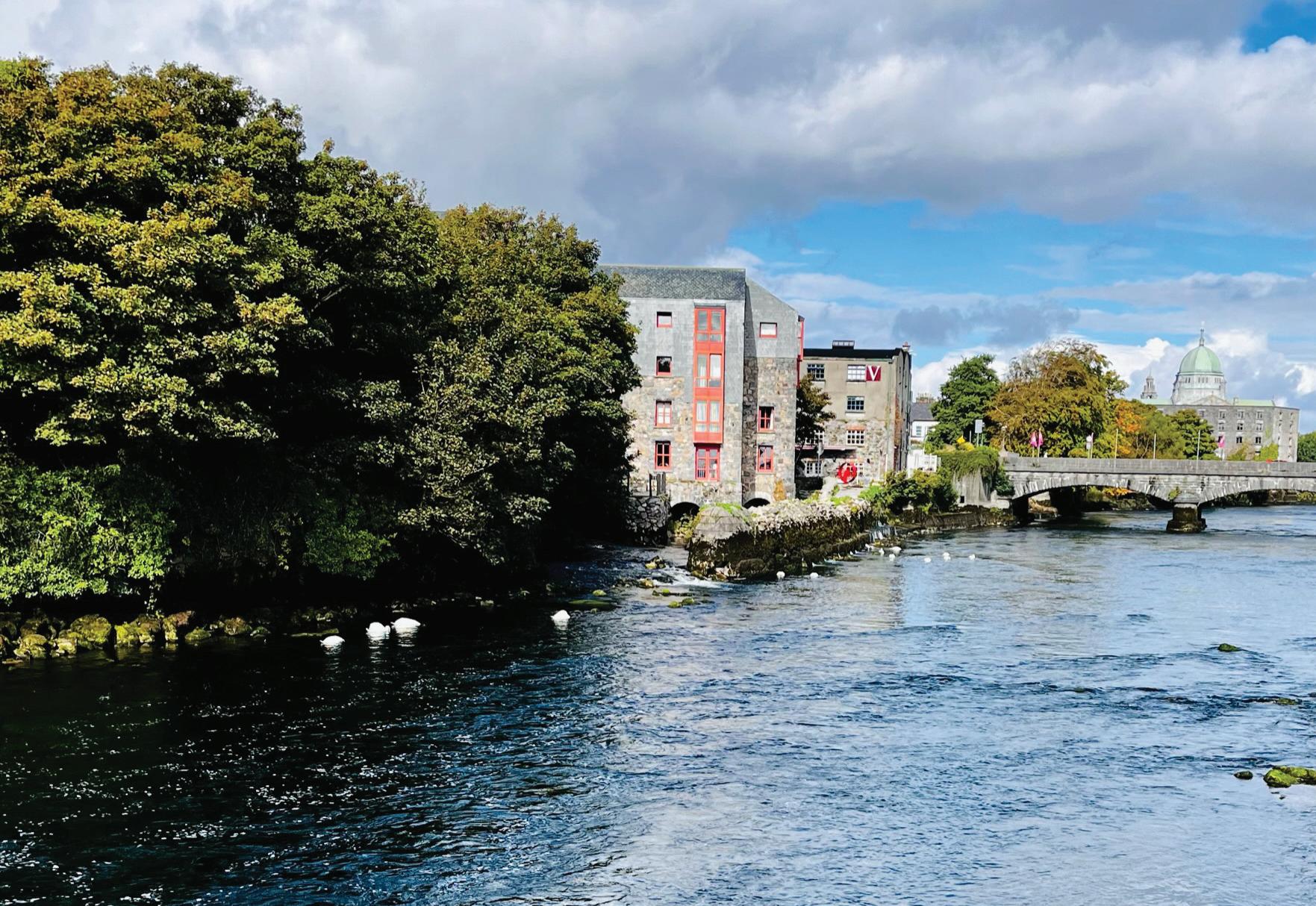
With an area of around 54km2, Galway is the fifth biggest city in Ireland after Dublin, Belfast, Cork, and Limerick, as well as the fifth most populous, and is the only city in Connacht. Predominantly a student city, it has the highest per capita student population in the State.
Nearest commercial airports: Shannon Airport: 85km
Ireland West Knock Airport: 89km Dublin Airport: 227km
23 per cent of population commute to work on foot
5 per cent commute by bicycle
8 per cent commute by bus/coach
Less than 1 per cent commute by train 60 per cent commute by car/van 3-hour train journey from Ceannt Station to Dublin Heuston, six times daily Galway harbour can accommodate vessels with up to 10,000 tonnes deadweight (DWT)
Inner dock of harbour can accommodate up to nine vessels at any time 3,691 users of Galway Harbour in 2017
Galway Harbour handled 1 per cent – 604,000 tonnes – of Ireland’s sea freight in 2017
Source: CSO
€18,873,525 paid in Covid-19 business restart grant schemes
€38,721,060 allocated to housing and building in the local budget 2022
€103,577,762 total spending in the local budget 2022
524 people employed by Galway City Council
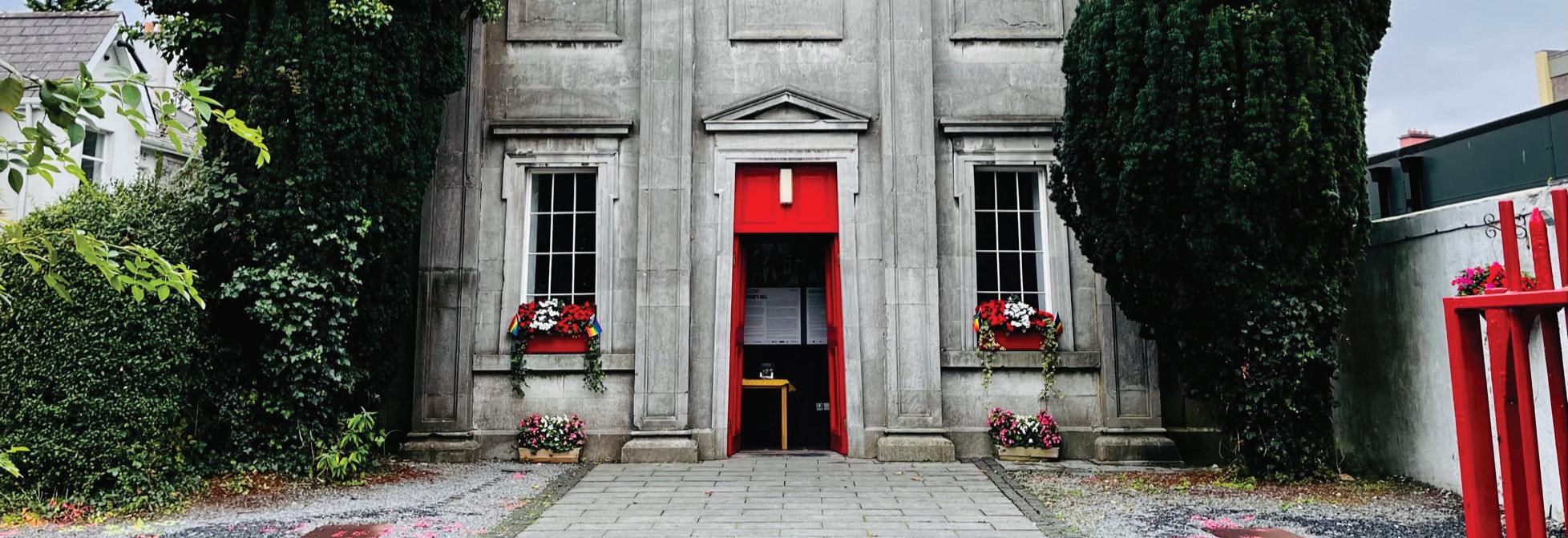
This represents a 20 per cent decrease since 2013
€53 million granted in infrastructure funding from the Department of Housing, Local Government and Heritage 44,376 people working in Galway city
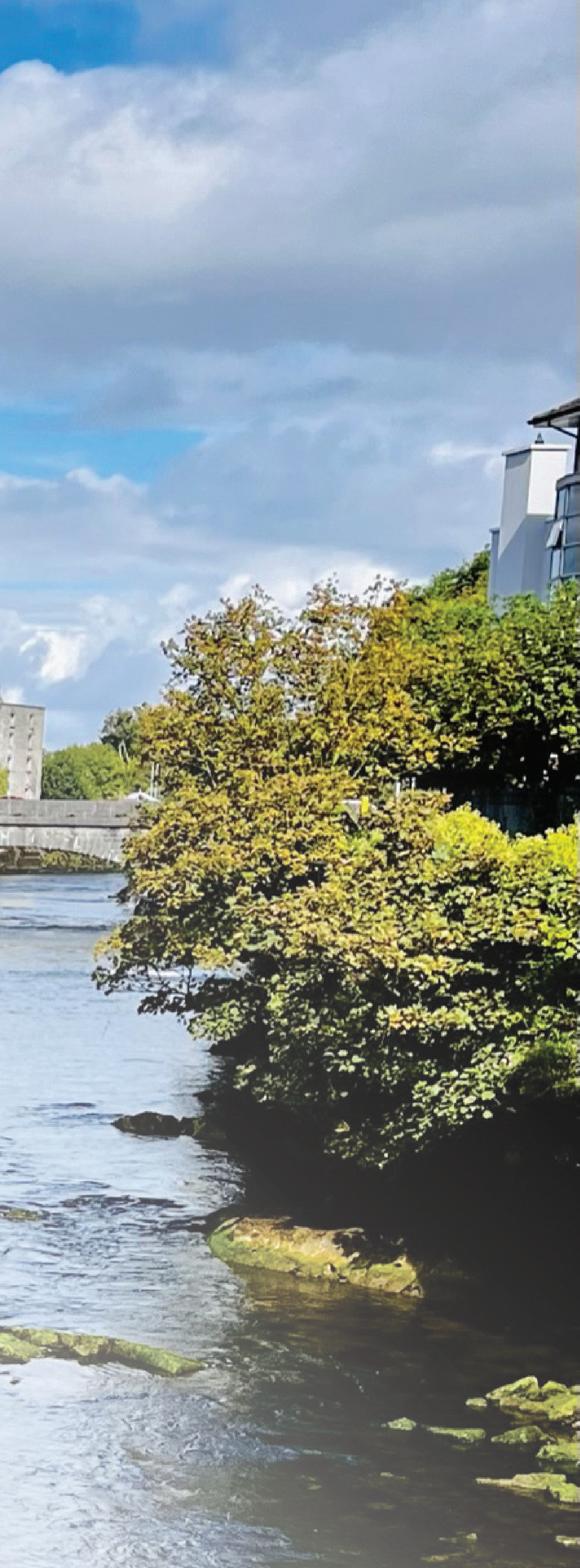

Labour force participation rate 61 per cent
Over half (22,105) of workers in Galway city commute to their jobs
Source: 2016 Cencus, Galway City Council



Crumlish is originally from Donegal, but having studied for his bachelor’s degree in the University of Galway, then known as University College Galway, he returned to Ulster, studying for his master’s at Ulster University and working in Derry, before returning to Galway city for a summer holiday and being “seduced by the arts scene in the city”.
“I suppose you should say I ran away with the circus. It was the end of the ‘80s, and to see the can-do things in Galway at a time when the country was not at its greatest was eye opening, especially with the band scene which was starting to kick off.
“Nobody had ever seen the kind of work that the art festival was bringing in as there were not any venues at the time. It was a great place to be a really buzzing at the time.”
Crumlish says that he could not get the city “fully out of my system” and references the Eagles’ hit “Hotel California”, saying: “You can check out any time you any time you want but you can never leave.” “I think it’s a welcoming city, since medieval time it was a trading town and as a result there has always been a very welcoming nature to the place. It is very seductive,” he elaborates.
“When I started, there were not a lot of venues for the art festival, so we were forced to use pop-ups,
John Crumlish, CEO of the Galway International Arts Festival, talks to eolas Magazine about the operation of the festival, challenges for the arts industry from Covid, and his favourite parts of the job.
which no one had heard of back then. Shows were always large scale, outdoors and with a lot of free work. Over the years, it has always been about ‘what is possible’ and always thinking big; Galway has always had that feel to it. We can take over the centre of town; it is our stage to play on whereas that cannot be done in Dublin.”
Another identifying feature is that the arts scene in Galway is reflective of the city’s proximity to Gaeltacht Conamara agus Árainn, with the complementary connection to Irish tradition, in addition to reflecting the international vibrancy of the city. It is in striking a balance here that Galway International Arts Festival strikes the balance of its existence in bringing the international to Galway, but also bringing Galway to the international stage.
“There is not a big problem of moving between from traditional arts to someone like [English electronic musician] Jon Hopkins, the festival is always multidisciplinary. Our job is to provide the best possible art experience for as many people as possible. Whether you are from Oileáin Árann or Ottawa, there should be something in our programme which suits you.”
This approach has helped the festival attract ever-increasing numbers, and its multidisciplinary offering of music, drama, art installations, political talks, literary readings and everything in between sees the festival attract “the culturally curious and tourists” alike.
“In terms of a usual year, just under half come from the west of Ireland,” Crumlish explains. “Then it is equally split between the rest of the country and international market, particularly the USA and the UK.”
The Arts Festival has been boosted by international exhibitions of works, such as Mirror Pavilion Leaf Work by the artist John Gerrard, in locations such as New York,
Guangzhou, Sydney, and London, efforts which were outdoors and thus not stopped by the Covid-19 pandemic. Crumlish states that this has allowed the festival to develop relationships with high-profile artists both domestically and internationally. “That was a big change,” Crumlish says. “We decided that we needed to get outside Galway and for longer than two weeks. We had realised that social media was going to become huge, and we needed things to talk about; these were cultural billboards.”
The industry today faces a number of challenges, including, Crumlish states: “There have been a lot of people changing careers because of big companies in the city that are advertising well-paying jobs, people are moving away from their passions a looking after their first needs, paying their mortgages.”
Galway also suffered uniquely from the pandemic and its associated lockdowns: designated the European City of Culture for 2020, the events and festivals planned withered to nothingness; one such victim was the 2020 Galway International Arts Festival, due to be “the biggest festival we had ever done”.
He adds: “I cannot see costs and Covid changing that much between now and the 2023 festival and it is very hard to budget. There are problems around supply chains; we get stuff from all over the world and even domestically it is hard to find suppliers.
“The other thing is that we have all been in a holding pattern for three years, we have to tip toe to the future and accept that this situation might not change for the foreseeable future. The holding pattern is over. Next year we need to build on this year’s success, and we want to revive the development work and projects that were stunted by Covid.”
“Our job is to provide the best possible art experience for as many people as possible. Whether you are from Oileáin Árann or Ottawa, there should be something in our programme which suits you.”

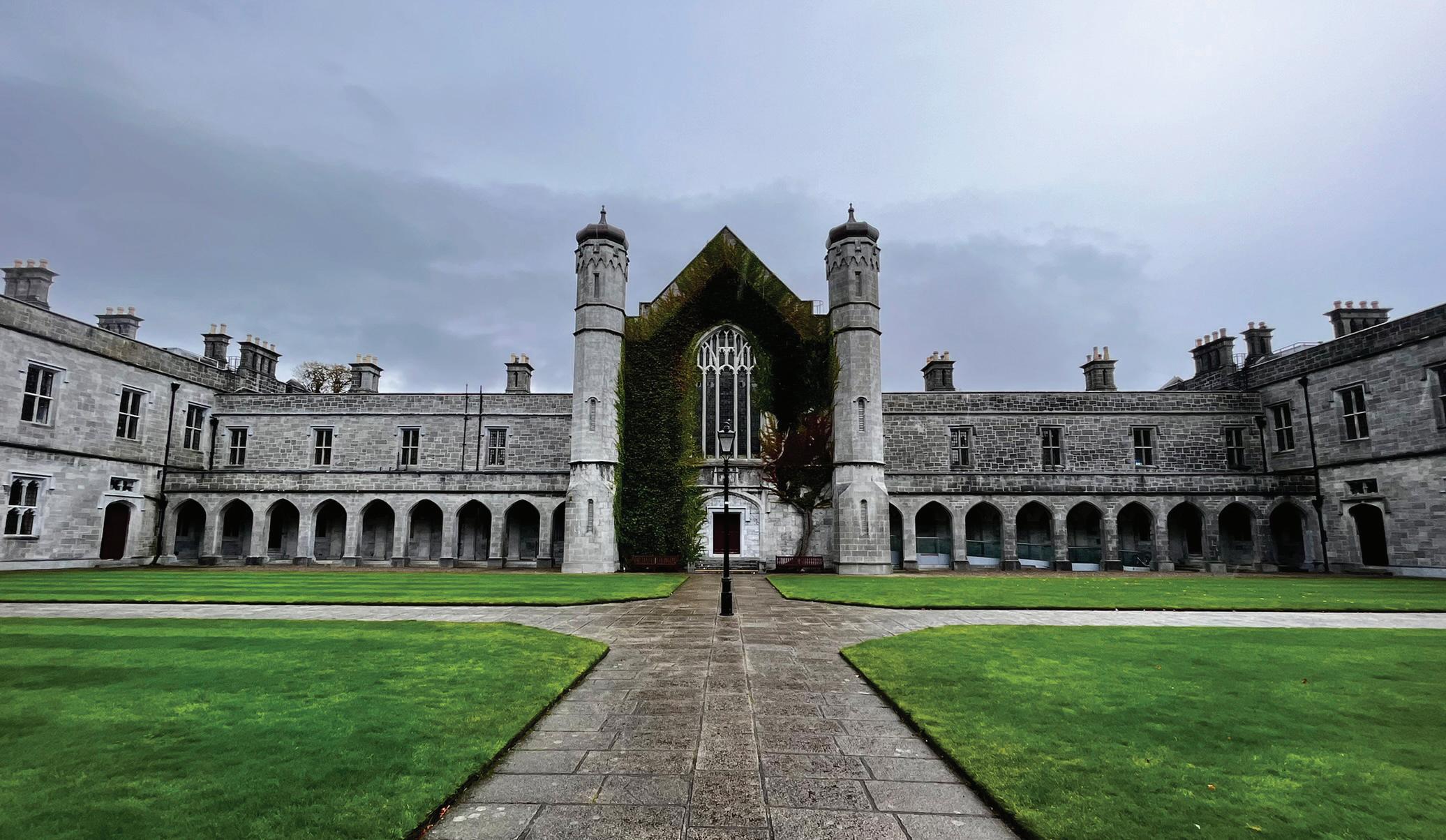
As a student leader amid an unparalleled housing crisis, Sai Gujulla, the Students’ Union president at the University of Galway, discusses tackling the housing crisis, priorities for the year ahead, and how the Covid19 pandemic changed student life in Galway city.
Gujulla states that the housing crisis in Galway city has been particularly challenging this year due to a chronic shortage of supply, exacerbated by graduates remaining in their accommodation, with some new students often forced to live peripherally in neighbouring regions.
Whilst some students’ unions pursue an activist approach to their policies, Gujulla opts for a cooperative approach with the university, which he states has resulted in the implementation of the ‘change’ platform on which he campaigned, as well as delivering a rent freeze on student accommodation.

“[The university] is open to change this year which the SU welcomes. The students have a president who will be happy to take part in any protest about housing.
“The university is building more accommodation on campus. It is also engaging with landlords in relation to the rent-a-room scheme, ensuring that tenancy rights are in place, as well as engaging with local hotels and bed and breakfasts,” he outlines.
Gujulla became president of the Students’ Union in July 2022. When asked about his priorities for the year ahead, he indicates that he wants to oversee the implementation of incremental yet significant changes for students in the University of Galway.
“For instance, our students did not have on-campus access to microwaves until last early September 2022, as a result of lingering Covid restrictions. The kind of change we are bringing is about following up and making things happen.
“We want to establish noncommercial spaces which will hopefully be created in the James Hardiman Library this year. Additionally, our students deserve a reading week; we are the only university in Ireland that does not guarantee a midsemester break.”

Gujulla outlines an environmental scheme which he hopes to see implemented: “We are in talks with the university over a 2GoCup scheme which will allow students to rent a cup when they get a coffee and receive €1 when it is returned.”
Gujulla has experienced the duration of the Covid-19 pandemic in his time as a student, which he believes led to a “huge drop in student engagement” across the university.
“If someone wanted to host an event, they had to get permission two weeks in advance and a proper room with sanitizers had to be booked. When students are hosting events like that, on top of their studies, they just do not have enough time or enough coordination to do it.”
However, the SU president does note that university sports teams are “in recovery” and that societies are “now fully up and running again”.
Likewise, he reiterates the importance of housing Galway’s student population, and collaboration with the Students’ Union of the Atlantic Technological University as “they are facing similar problems with us with housing and services on their own campuses”.
Our decision to take this step on our journey followed detailed consideration and consultation. While our history of more than 175 years could never be captured solely in a name or a logo, we are confident our new identity reflects who we are, our essence, and our place in Ireland and the world. Its beauty is also its simplicity – we are a university, and we are in, of, and for, Galway.
University of Galway is built around our values – excellence, openness, respect, and sustainability. We are a global university, committed to outstanding students and staff, with world-class facilities for renowned education and research. We build on our heritage and history, remaining proactive and responsive to a rapidly changing world while providing the bedrock for Galway to thrive, not least as a global hub for medical technology, data and IT, and a city renowned for culture and creativity.
It is easy to look at Ireland and feel like we are on the edge, or the extremity, with continental Europe to the east and
an ocean and the Americas to the west.
We look at where we are and we see a university open to the world. We offer a diverse learning community. We value the dynamism that our students bring to Galway, each year, from more than 90 countries and we work hard to ensure that ours is an accessible and inclusive campus. Along with our students, we are on a journey to become leaders in sustainability.
Our university is rooted in the unique culture, communities, language and landscape of the west of Ireland and our research is focused on many of the world’s most pressing challenges, as framed by the UN Sustainable Development Goals.
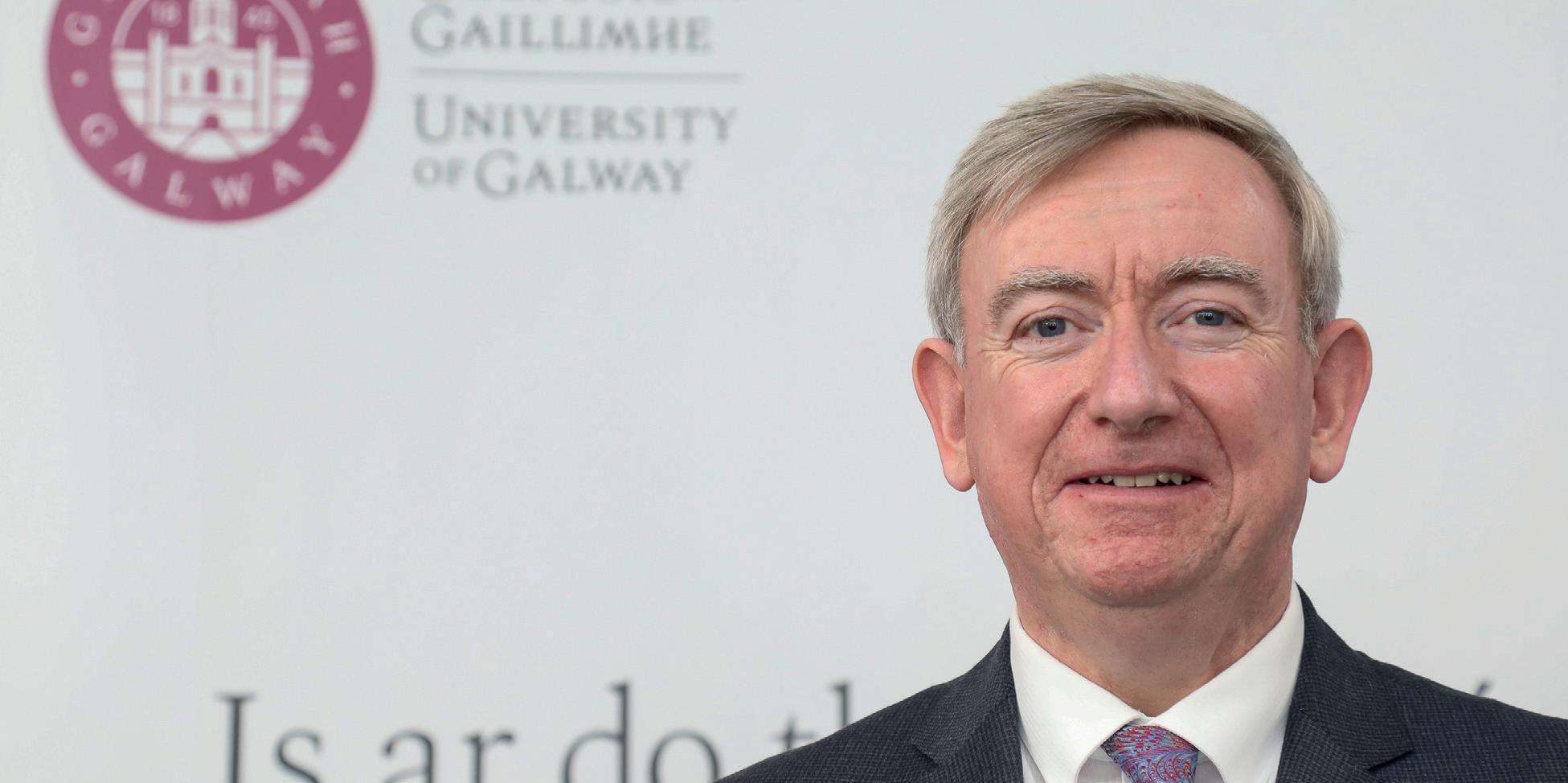
Along with our bilingual identity, our new brand is based on the modern and traditional elements that are important aspects of our ethos, including the Quadrangle; 1845, the year in which the University was founded; and a vibrant colour which plays on maroon, synonymous with Galway.
Over the coming years we look forward to building new partnerships and collaborations locally, nationally, and globally. We hope you like our new name and identity. We hope you will embrace. All that we ask is that you watch out for #UniversityofGalway and where you see it, share it.
1 September 2022 marked a new chapter in the history of one of Ireland’s top universities. Professor Ciarán Ó hÓgartaigh, President of University of Galway, writes how the new name and identity holds fast to a rich heritage dating back to 1845.
Galway City is the third most visited city in the State, only after Cork and Dublin, and the Galway Tourism Strategy aims to increase the number of visiters to the city by 20 per cent by 2025, which will increase money generated by tourism by 25 per cent, giving the sector a value of €735 million.

The tourism sector has been tested due to the Covid-19 pandemic, but the strategy has endured and 2021 saw the construction of the new Galway City Museum, the establishment of a new water activity tourism hub, and, though not exhasustively, the Galway Brand Development project.
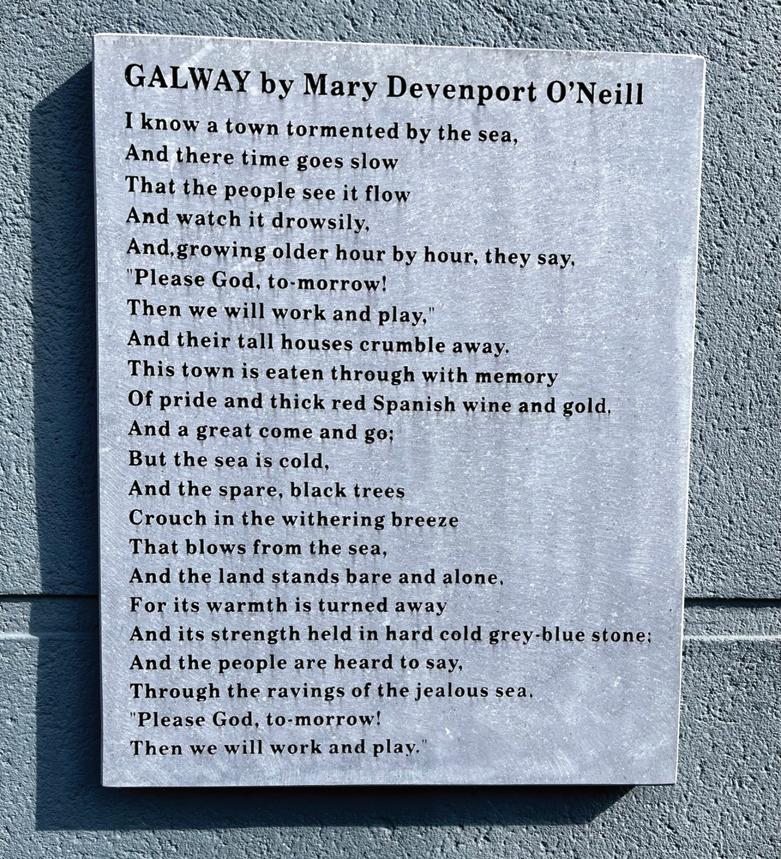

Galway is Ireland's only bilingual city and served as European Capital of Culture 2020; a significant recognition of its vibrant arts and cultural scene. The Gaeltacht areas and Irish speaking communities in Galway make it a uniquely bilingual region which fosters Irish language heritage and culture in many forms that have influenced daily life, from culture and traditions, music, language, dialect, and the vernacular buildings.
Galway’s tourism sector was once supported through a regional airport, Galway Airport, which used to have over 300,000 passengers using it per year, but this airport was closed for commercial operations in 2011 following the financial crash and the subsequently decline in aviation usage.
Visitors to Galway can still avail of the relatively nearby Ireland West Airport Knock and Shannon Airport.
Additionally, the construction of the M6 motorway between Galway and Dublin means that flying to Dublin Airport is now a feasible option for visitors to Galway.
The strategic priorities are to: increase visitor numbers by 20 per cent by 2025 and increase the value of tourism to Galway
by 25 per cent, being worth €735 million by 2025; successfully manage the city’s reputation; support expanding or emerging tourism businesses to create excellent products and experiences; attract further investment; guide, develop and provide sustainable, world-class tourism experiences, suitable for the market and Galway’s communities; support local communities as ambassadors of the region; and work in partnership with stakeholders and engage with the industry.

The strategy includes three particular action plans which the Council hopes will help it to meet the targets for 2025, the first of which is centred on enhancing the reputation of Galway city as a destination and ensuring that there is an adequate marketing programme which can deliver this.
By 2025, the Council hopes to stablish and facilitate a high level Galway marketing/development group that will plan, track, and review progress and develop an annual action plan based on research findings. This group will then produce an annual report based on industry and visitor surveys that will highlight gaps and improvements needed in the tourism sector.
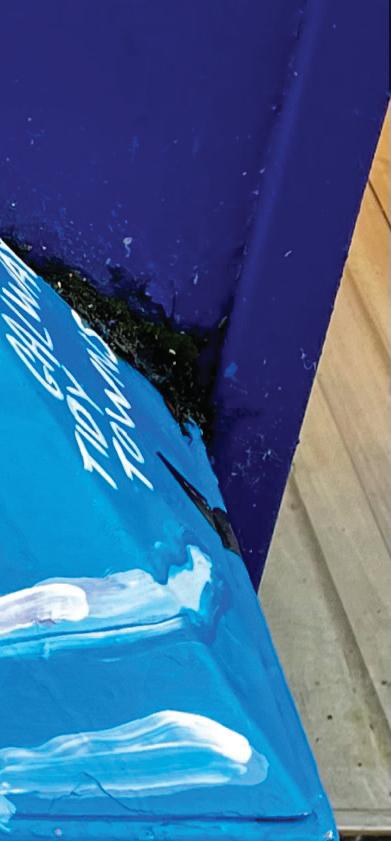
The action plan further outlines details to improve Galway city as a corporate destination, as well as encourage the city as a place with a four-day itinerary. To achieve this, Galway aims to develop an international marketing strategy for Galway in conjunction with Tourism Ireland and Fáilte Ireland.
Working with social influencers as well as
traditional media outlets to increase the awareness of Galway as a destination, the plan further aims to develop transport links to Galway, supporting airlines and the regional airports on destinations campaigns that highlight Galway in international markets with direct access to the west.
The strategy aims to enhance opportunities to promote training and up-skilling that is needed amongst tourism providers.
Working with Fáilte Ireland, the Council will develop local training programmes and encourage tourism businesses to take up training opportunities already available. It will additionally strengthen the links between tourism businesses, training providers, colleges, and universities.
To build capacity in the local community, the action plan says it will continue to support local initiatives Pride of Place, Tidy Towns, Purple Flag, and similar opportunities for community groups to learn from each other.
To develop the experiences of visitors to the city, the strategy outlines the ambition to collaborate with industry partners in proposals for infrastructure projects such as Wild Atlantic Way Discovery Points and Loops, development of greenways, camper van facilities and private led projects that will enhance the Galway Tourism experience, and will support businesses to develop cycle tourism experiences as the cycle network and greenways progress in the city.
“Our cities become very dull if they are not populated by artists and we have to protect this sector,” according to Megs Morley, Director and Curator of Galway Arts Centre, who sits down with Ciarán Galway and Odrán Waldron to talk about challenges faced by the sector, and what gives Galway city a unique arts scene.

Morley has been in Galway since 2005, and has worked in various roles throughout the arts sector, including freelance roles with the Irish Museum of Modern Art as a book editor and film editor. She has also held roles with the Galway City Council in the past, including as a public arts commissioner.
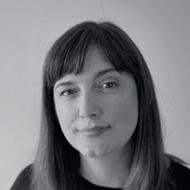
She assumed her current role in September 2021 and believes that the ongoing energy crisis presents a challenge “potentially on the same scale as Covid” for the sector. She further states that she hopes to “continue the work that we have been doing, creating the space for voices from all parts of the community to express their creativity, share that culture with a wider audience in Galway”.
Morley, who originally hails from Mayo, believes that the Covid-19 pandemic caused problems for the arts sector economically and in terms of audience confidence.
“What we have seen is ebbs and flows of that confidence through the year; at certain points we have been quite busy but at other points there is still a hesitance to fill certain venues. This is happening right across the arts, and it is a challenge which everyone in the arts sector is facing right now.”
She continues: “The Galway Arts Centre is very much a venue-based organisation with our public galleries and our theatre. If the doors are closed, that is a pretty big challenge to overcome. Moving our work online was a challenge but also opened up creative potential for engaging with new audiences. When we did reopen the doors, we were very restricted in terms of how many people could be in a gallery at one time.
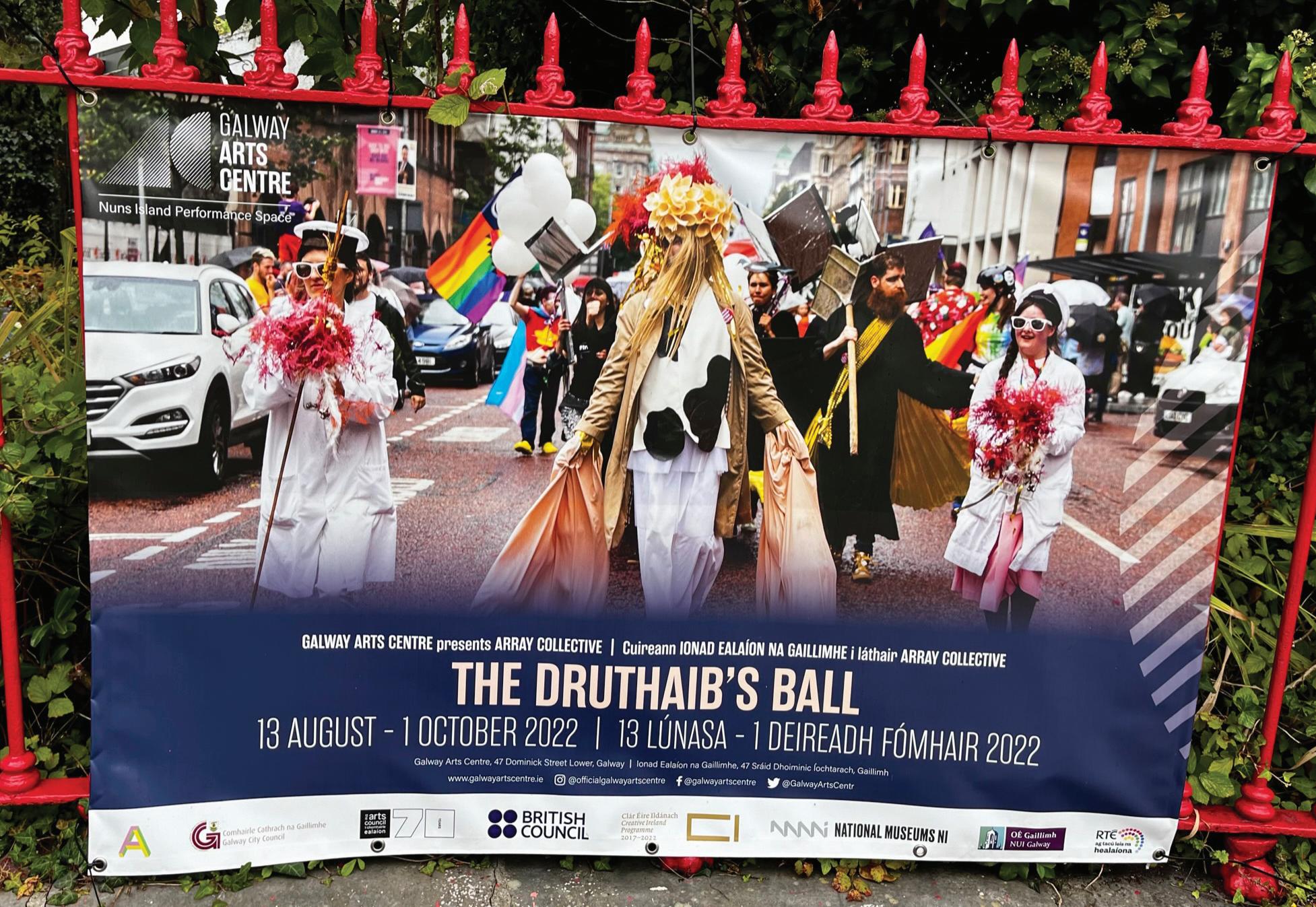
“That was really challenging, and it really effects how people experience the arts. That is probably the most difficult thing, making people feel confident enough to come back and experience the arts again.”

One of Galway city’s unique factors is that it is the most diverse city in Ireland, and its high student population, according to Morley.
“It is a really young city which is steeped in Irish traditions which is full of welcome. It is a really international and diverse community which is what makes Galway real cultural hub and a vibrant and interesting place to be. It attracts a lot of artists and musicians to live here. There is a real wealth of exciting artistic talent here.”
Morley further explains how the city’s diversity is reflected by the programmes and exhibitions in Galway Arts Centre and how the arts sector has championed representation of people from minority backgrounds, and that the Galway Arts Centre has been a hub for art representing people from LGBT+, immigrant, and Irish Traveller backgrounds.
Reflecting on Galway city’s proximity to the Gaeltacht and consequential connection with old Irish traditions, Morley states that she admired “artists like Ceara Conway, who is based in Galway and who draws from the sean nós tradition such as the caoineadh, but takes a contemporary approach to it that recreates it for today”.
She adds: “I think that Galway city creates that space for reimagining the traditional roots of cultures and bringing them into the contemporary moment to make them relevant for now. The Array Collective [whose Turner Prize-winning installation The Druithaib’s Ball was shown in the Galway Arts Centre and its Nun’s Island Theatre from August-October 2022] is dynamic and interesting; they have a grá for Celtic and pre-Christian mythology and the characters from those myths, whilst adapting those characters in a contemporary way.
“Each artist from the collective has created characters and costumes that are drawn from these myths, and they use them to create performances, films, protests and events with. So you will see a lot of imagery from Celtic mythology. When you experience their immersive installation, The Druithaib’s Ball the connections to these roots are really brought into the current social and political moment.”
Morley further outlines how the arts sector is strengthened through diversity of age, and that there is “a younger generation that are really interested in maintaining the language and drawing on their heritage but in a fresh and contemporary way which I think is the key”.
She concludes: “Culture is not a museum piece; it is alive and living and it needs to be adapted for our times and for what is relevant and important now. I think that that is the same for Irish culture and all of our traditions.”
Galway Convention Bureau promotes Galway as a destination for

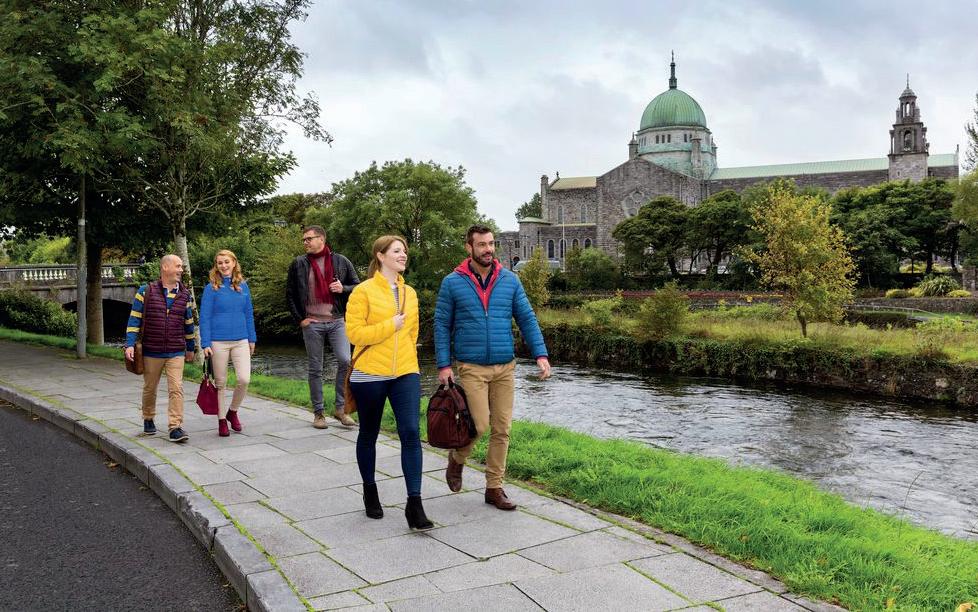
international meetings, conferences, and events and is supported by Fáilte Ireland, Galway City Council and Galway County Council, Shannon Airport, Western Development Commission, and trade memberships.
The convention bureau’s strategic partners include University of Galway, ATU Galway, Galway Chamber of Commerce, and the Galway branch of the Irish Hotel Federation. Galway Convention Bureau’s membership consists of venues, universities, hotels, retailers, transport, restaurants, pubs, activities, attractions, and airports.
In the year to date, Galway Convention Bureau and Fáilte Ireland have secured circa €7.6 million in business for Galway in MICE (Meetings, Incentive, Conference, Events) led revenue. A business visitor is worth up to three times that of the leisure tourist and meetings tend to take place outside the main summer months, which will lead to an extension of the season for the tourism sector in Galway. This has a very positive effect on the local economy in ensuring that jobs are kept in the west.
Earlier this year in July, the 11th European Solid Mechanics Conference took place at the University of Galway over five days. With over 1,200 delegates in attendance, it was the largest international conference to have ever taken place on the campus. In addition, the economic impact of the conference to the local area was almost €2 million.
The Conference Ambassador Galway Convention Bureau is looking for people throughout Galway to become champions in bringing international conferences home to the city and county. People who might be thinking of hosting an international conference can work with Galway Convention Bureau and become a conference ambassador.
Conference ambassadors are influential members of professional and industry associations who can influence their home country in hosting international conferences and meetings. They may have been involved in the organising of these conferences in the past or expressed interest in doing so while attending such events abroad. Ambassadors can become a spokesperson for Galway and choose to be involved as much as they like with the event, or they can leave it to the Galway Convention Bureau team who are here to help from the very beginning and ensure that the conference is a major success.
“A business visitor is worth up to three times that of the leisure tourist and meetings tend to take place outside the main summer months, which will lead to an extension of the season for the tourism sector in Galway. This has a very positive effect on the local economy in ensuring that jobs are kept in the west.”

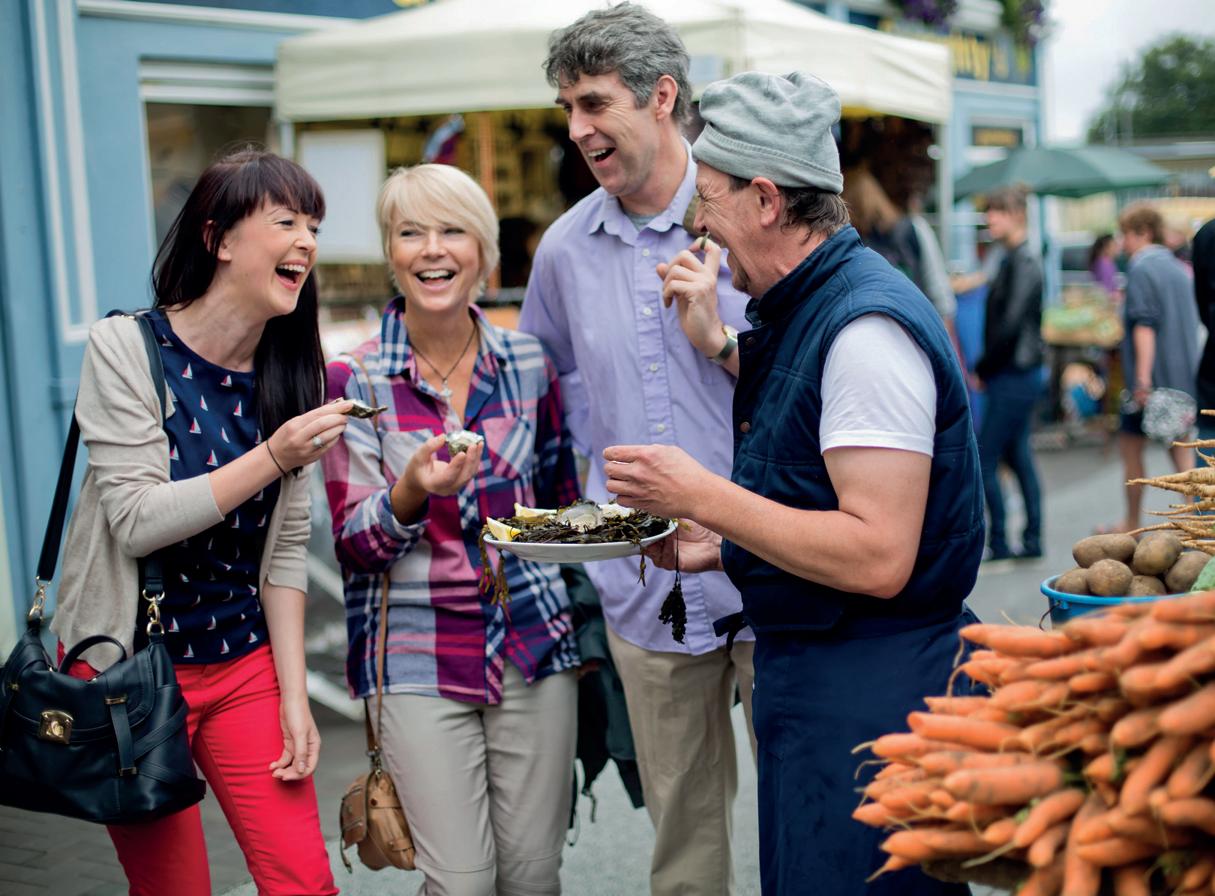
Benefits of becoming a conference ambassador:
• free support from conferencing expert;
• recognition from your professional colleagues;
• increased profile for Galway/national association;
• enhanced reputation in your area of expertise;
• increased networking opportunities and worldwide links;
• increased revenue to local economy;
• create awareness for local tourism; and
• earn national and international recognition.
Galway Convention Bureau supports include:

• bid documentation preparation and presentation;
• guidance on financial funding through Fáilte Ireland (please note certain criteria must be met and approved) to assist with the preparation and the travel involved with bidding for an international conference. Meet in Ireland, a brand owned and operated by Fáilte Ireland, our national tourism development authority, offers a suite of financial supports to help attract corporate meetings and incentive trips to Ireland;
• independent advice on all aspects of organising an international conference;
• introduction to professional conference organisers (PCOs) who can manage the bid process for you;
• letters of invitation/endorsement to support the bid document;
• image libraries;
• award winning videos;
• sample presentations; and
• site inspection hosting.
From the initial bid to the event itself, Galway Convention Bureau and Fáilte Ireland will work hard to support our Conference Ambassadors to deliver successful conferences and provide unique experiences for your delegates.

T: 091 33 99 20
E: info@galwayconventionbureau.com

“Having a network in business is key to your success to endure the ups and downs as part of the business journey,” says Treasa Hanniffy, president of the Galway branch of Network Ireland, who discusses her priorities in the role, improving life for women in business, and Galway city as a business destination.
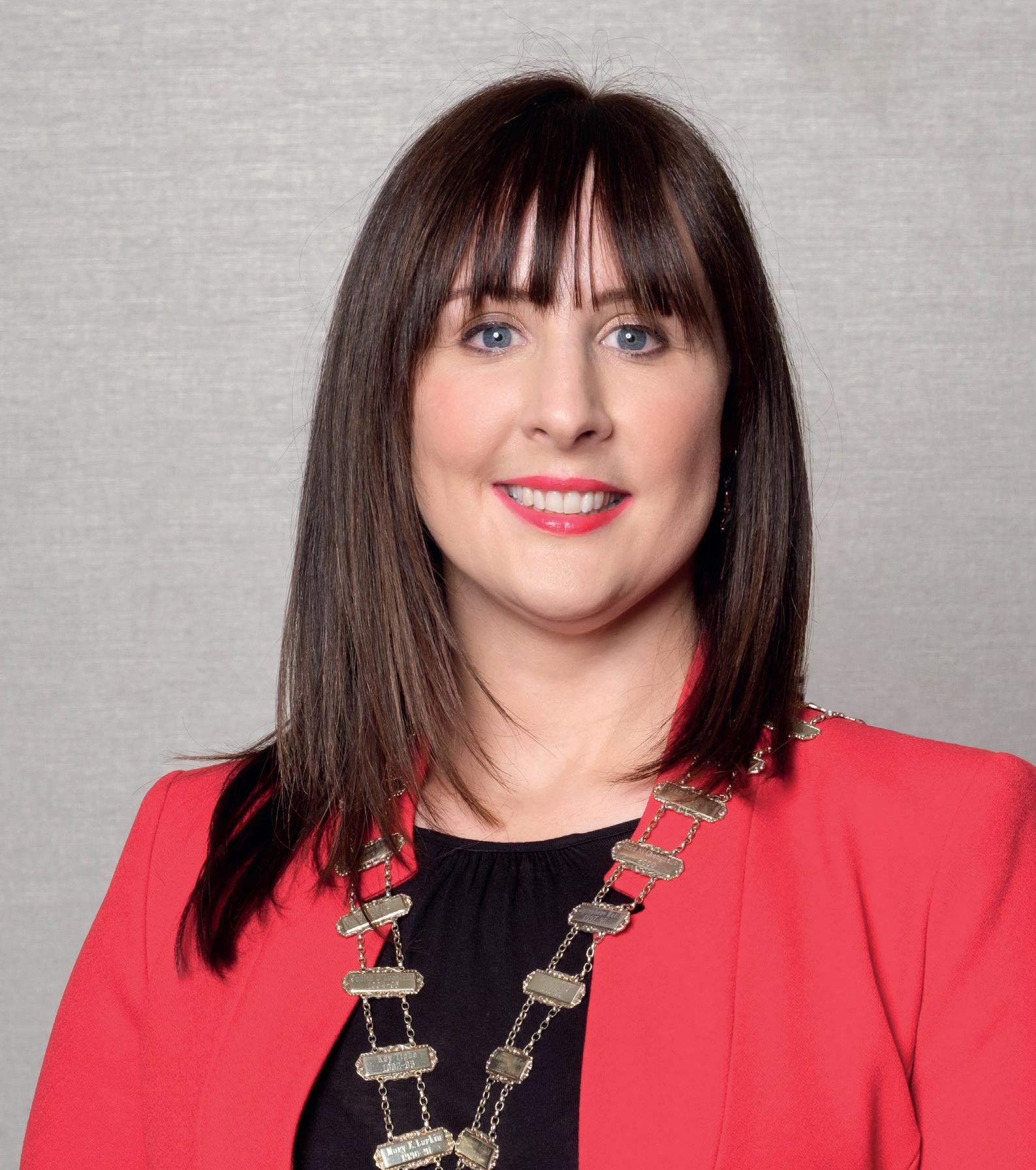
Network Ireland was established in 1983 as an organisation for women in business and the workplace to network and with the aim of “promoting professional and the personal development of women in business across Ireland”. The Galway branch was established in 1990 and has over 100 members and is growing.

Hanniffy is serving a one-year term as president of the Galway branch, which is due to expire in the coming weeks. She states that her priority upon assuming the role was engagement with her fellow members in person, especially after two challenging years.
“As we emerged from the pandemic, some members wanted support to help grow and develop their business or career journeys, more wanted connection as it can be isolating being on your own in business. A supportive community is crucial to success while also balancing your professional and personal goals.”
She states that business in Galway thrives based on the closeness of the community of the city. “Referrals are an important aspect of business in Galway. The best kind of referral has always been word of mouth. People buy and do business with people they trust or that have been highly recommended. Galway businesses prosper from networking and building these connections.”
She adds: “Galway is a city of warmth, character, and resilience. No matter what business you are in, there is a tribe where you can connect, seek support, expand, and export depending on your needs. This is key in terms of growing and learning, as success is not a straight road and your tribe are a key element to growing your business locally, nationally, and globally.”
Hanniffy believes that businesses are facing major challenges in the years ahead. “We are still reeling for the impact of Covid followed now by the energy crisis as costs are rising significantly. When you hear the word blackout, it is a case of either being overcome by fear or trying your best to adapt and being more energy efficient.”
Further to the ongoing crises, Hanniffy believes that Galway city has never truly recovered since the 2008 financial crash. “The city still has a long way to go in terms of recovery. We have not got a big retail unit as they have not been attracted into the city. Great work is being done on innovation and STEM, but there is room for a lot of progress culturally.”
Hanniffy does, however, give cautious optimism for navigating a course out of Galway’s problems, which she believes can act as a springboard for further recruitment going forward.
“We see a lot of impressive stuff behind the scenes, especially with the creative hubs and the collaboration with the colleges, and it helps to attract great talent. The rental market is at capacity, yes building is up, but it is mostly just for the social housing market.
“The big thing is trying to find the talent. If the rent here is the same as Dublin, there is no attraction that can be unique and enticing about Galway.”
Whilst progress has been made, Hanniffy outlines her belief that there is still a generation of women who have been held back due to the “taboo” nature of discussion of issues unique to women and their wellbeing.
“Menopause, miscarriages, and infertility are very hard emotional journeys which women could not discuss openly but thankfully that narrative is beginning to change for the better.”
Hanniffy believes the modern businesses ad workplace orthodoxy needs to take further account of work-life balance for employees, and that an employee will be “loyal to an employer who is on their side”.
“Women need to be supported and flexibility is key to them flourishing in their roles. Remote work is a great blessing as a result of the pandemic but also beneficial due to spiralling costs of commuting and childcare costs.”

She adds: “It is not even just women; dads want to be more involved too, and remote working during Covid was a bridge to that gap which exists in a lot of families. However, today, childcare costs are going up and commuting costs are going up. A balance needs to be struck which takes account of the cost of working and the rewards that come from it.”
Speaking on mental health positivity and challenges for people running a business, she concludes: “It is not just about arriving at a destination, it is about enjoying the journey. Having a supportive network makes it all worthwhile.”
Agus iad ag déanamh cúirt ar cathair na Gaillimhe, shuí Ciarán de Gallaidhe agus Odrán de Bhaldraithe síos le Bríd Ní Chonghóile, Príomhfheidhmeannach Ghaillimh le Gaeilge, chun stádas an teanga insan cathair a phlé. Ciarán Galway and Odrán Waldron discuss the status of the Irish language in Galway city with Bríd Ní Chonghóile, CEO of Gaillimh le Gaeilge.
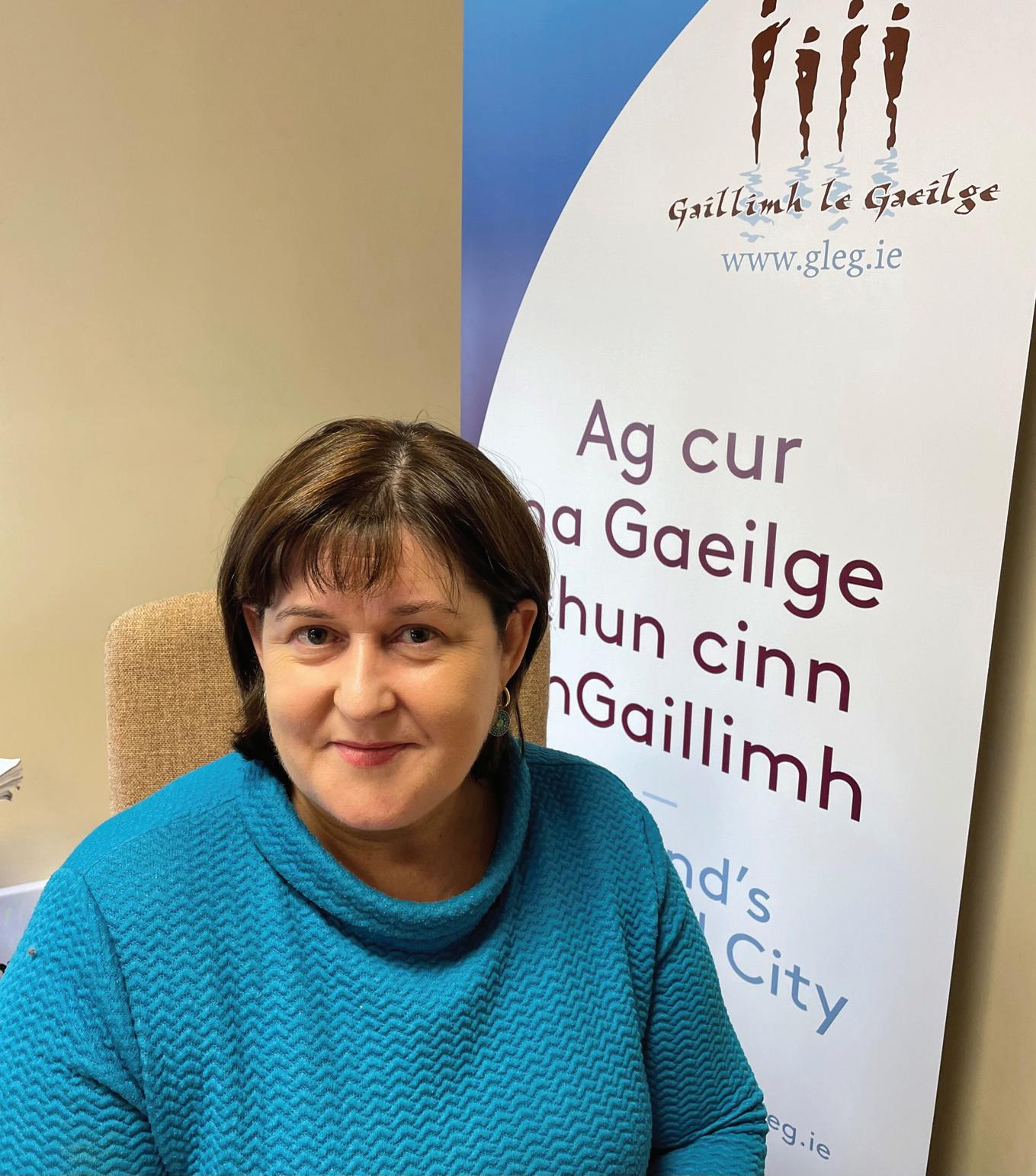
Bunaíodh Gaillimh le Gaeilge i 1987 faoi choimirce Chomhdháil Naisiúnta na Gaeilge le go gcoinneofaí agus go neartófaí an Ghaeilge agus chun a chinntiú go leanfadh an buntáiste mór geilleagrach don chathair a ghabhann leis an nGaeilge. Le tacaíocht ó Roinn na Gaeltachta, d’údaraigh an fiontar staidéar socheacnamaíoch a rinne Coláiste na hOllscoile, Gaillimh (Ollscoil na Gaillimhe anois), faoi céard is fiú idirghabhálacha an stáit ó thaobh na Gaeilge i limistéar na Gaillimhe. Léirigh an taighde, Tuarascáil Uí Chinnéide, gurbh £17 milliún in aghaidh na bliana do limistéir na Gaillimhe agus £13.1 milliún in aghaidh na bliana do chathair na Gaillimhe na hidirghabhálacha sin. “Go leor airgid a bhí ann ag an am sin,” a deir Ní Chonghóile
Leis an mbuntáiste seo a choinneáil i nGaillimh, chuaigh Peadar Ó Flatharta agus Pádraig Ó Beaglaoich chuig an gCumann Tráchtála chun plé a dhéanamh ar an mbealach is fearr chun an buntáiste seo a choinneáil i gcathair na Gaillimhe. Bunaíodh Coiste na Gaeilge sa Chumann Tráchtála faoi Chathaoirleach Sheosaimh Ó hÓgartaigh, fear
gnó agus Gaeilgeoir líofa a thig an gaol atá idir an chathair agus an Ghaeltacht mar aon leis na buntáistí geilleagracha, sóisialta, agus cultúrtha a d’eascair as an gaol sin.
Mar thoradh ar an tuarascáil, bunaíodh Gaillimh le Gaeilge, ó sin tá dul chun cinn déanta acu laistigh de phobal gnó na Gaillimhe chun infheictheacht na Gaeilge a ardú trí scéimeanna ar nós scéimeanna Cairde Ghaillimh le Gaeilge, an tSeirbhís Gaeilge sa Ghnó agus Gradam Sheosaimh Uí Ógartaigh, agus tá úsáid na Gaeilge ó lá go lá á cur chun cinn sa chathair. Tá obair an Choiste Logainmneacha i gcomhar le Comhairle Cathrach na Gaillimhe ar cheann de na héachtaí is infheicthe agus is mó tionchar ó thaobh na Gaeilge scríofa di.
“In 2009, rinneadh uasdátú ar Thuarascáil Uí Chinnéide Cuireadh in iúl sa taighde go raibh os cionn €136 milliún i limistéir na Gaillimhe ag teacht ón Ghaeilge agus chomh maith leis sin, cuireadh moltaí nua ar fáil chun dul i bhfeidhm tuilleadh ar an lucht gnó,” miníonn Ní Chonghóile.
“Tá an sprioc chéanna againn inniu is a bhí i 1987 ach amháin go bhfuil uirlisí difriúila agus tograí nua á úsáid againn chun an Ghaeilge a chur chun cinn. Oibríonn muid freisin chun úsáid na Gaeilge labhartha a chur chun cinn tríd ár n-imeachtaí éagsúla gnó lena n-áixrítear an Lón Gnó míosúil agus imeachtaí rialta eile.”


Tá dhá stráiteas foilsithe ag Gaillimh le Gaeilge ó bunaíodh iad, an chéad ceann in 2006. Bhain an straitéis sin go príomha le stádas dhátheangach a bhaint amach do chathair na Gaillimhe.
“Chreid muid go gcuideodh stádas dhátheangach oifigiúil le seasamh na Gaeilge sa chathair a threisiú agus go spreagfadh sé comhlachtaí nua ag teacht isteach sa chathair an Ghaeilge a úsáid,” a deir Ní Chonghóile.
Seoladh an straitéis is deanaí 2023-2025 don eagraíocht ar Oíche Chultúir 2022 mar céad chéim eile i bhforbairt Ghaillimh le Gaeilge. Tugann an straitéis aghaidh ar na dúshláin agus na deiseanna a chuireann Plean Teanga Chathair na Gaillimhe (2020-2026) rompu.

I measc na dtionscnamh nua sa straitéis, tá stádas mar Bhaile Seirbhíse Gaeltachta á bhaint amach do Ghaillimh i gcomhpháirtíocht le Comhairle Cathrach na Gaillimhe.
“Tá muid ag iarraidh go mbeadh seirbhís i nGaeilge le fáil go héasca sa chathair ionas go mbeidh deis ag daoine, más rogha leo, gnó a dhéanamh trí mheán na Gaeilge.”
Tá sé beartaithe acu Lárionad Gaeilge a éascú sa chathair agus féilire d'imeachtaí Gaeilge a fhorbairt do chainteoirí líofa chomh maith leo siúd a bhfuil cúpla focal acu agus atá ag iarraidh níos mó deiseanna lena gcuid Gaeilge a chleachtadh.

“Tagann go leor do na daoine as na Gaeltachtaí mórthimpeall orainn isteach sa chathair go fóill agus déanann siad gnó sa chathair,” a deir Ní Chonghóile, arb as Ceathrú na gCloch i nGaeltacht Mhuigheo di. “Bheifeá ag siúil le haon chathair sa tír a dheireann go bhfuil sé dátheangach go mbeadh líon áirithe de chomlachtaí agus d’eagraíochtaí ag soláthair seirbhís i nGaeilge.”
“Rinne muid staidéar a choimisiúnú chun staid reatha na Gaeilge sa chathair a thomhais, bhí 53 faoin gcéad de na gnólachtaí a ghlac páirt sa
taighde go bhfuil comharthaíocht dhátheangach acu agus 67 faoin gcéad acu go n-úsáideann siad Gaeilge in ábhar scríofa a bhaineann lena ngnólacht.
“Beidh muid ag súil mar sin, agus stádas mar bhaile seirbhíse Gaeltachta bainte amach ag an gcathair, go mbeidh muid in ann a rá go bhfuil ar a laghad 50 faoin gcéad de na gnólachtaí i gcathair na Gaillimhe ag cur seirbhís i nGaeilge ar fáil.”
Switching briefly to Béarla, Ní Chonghóile explores the strength and value of the Irish language in the city and the origins of that strength:
“The Irish language is worth in excess of €136 million annually to the economy of Galway City and County €59 million of this goes to Galway City. An Taibhdhearc, Conradh na Gaeilge, Gaeil na Gaillimhe are situated in the city. We are located near the largest Gaeltacht, and we have the headquarters of Roinn na Gaeltachta, Údarás na Gaeltachta, TG4, and RTÉ Raidió na Gaeltachta on our doorstep.
“Also, Galway is well known as a cultural city, with a thriving traditional music scene. As part of our work, we link the Irish
language to the cultural experience one gets when they visit Galway. Tourists especially wish to have a personal authentic experience. They want to experience what is authentic about the place, and the best way to do that is through the use of the Irish language.”
Finishing up, Ní Chonghóile once again reflects on the success of the organisation thus far, attributing it to their making of a business case for the language in the city, and concludes on an optimistic note: “I am always optimistic; you need to be optimistic and proactive when trying to change people's minds. I was lucky to have been brought up in the Gaeltacht, so my experience is positive. The Irish language is a huge part of who I am. I also have a business background, so I know that in order to sell a product, you need to present it in a way that appeals and connects with the customer. We are lucky in Gaillimh le Gaeilge in that we have a very strong board, a diligent team of four, and that we have been supported over the years by our funders and the people of Galway who believe in the vision that we have for Ireland’s bilingual city.”
